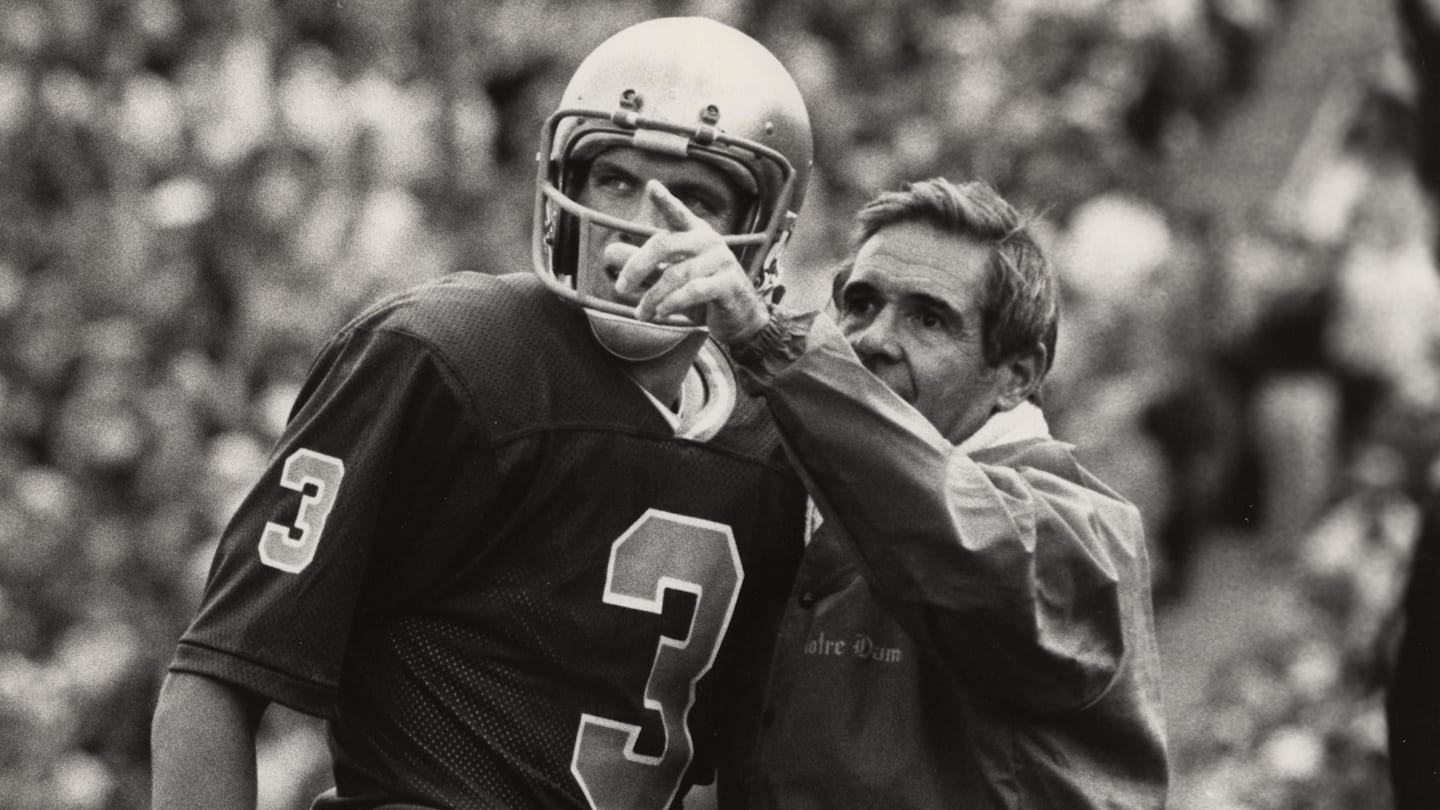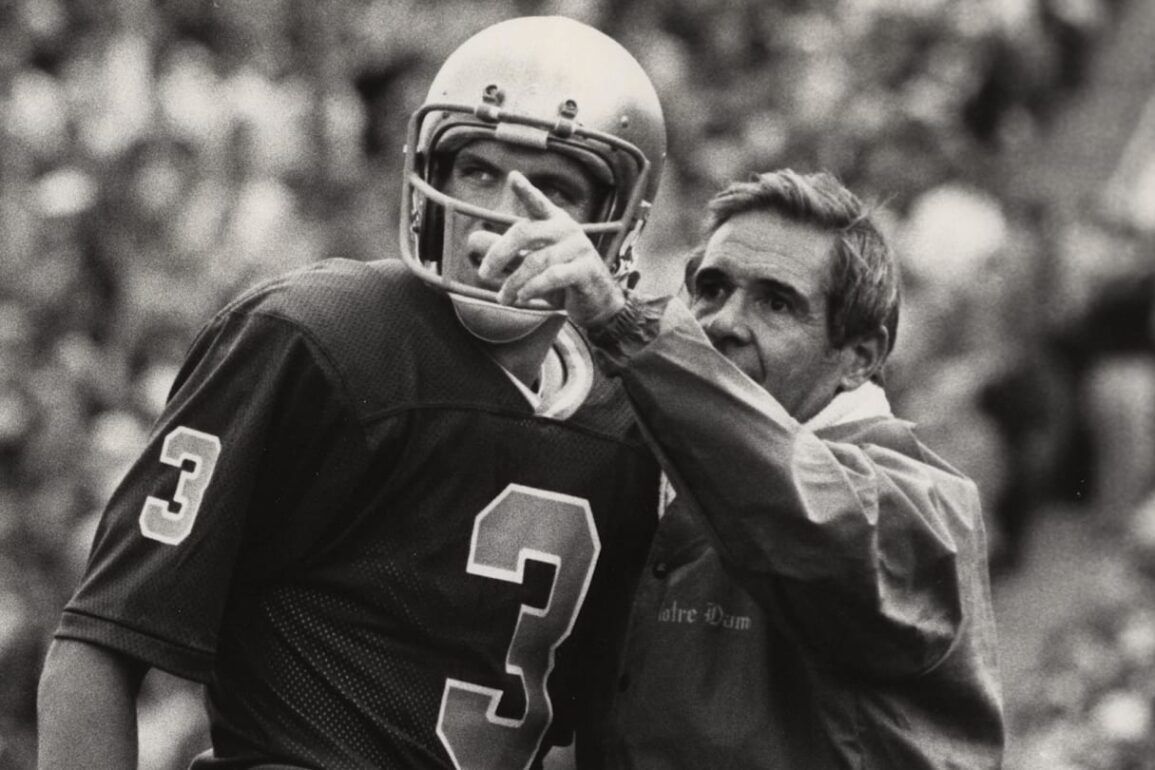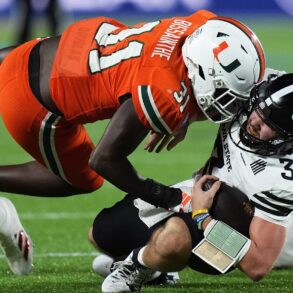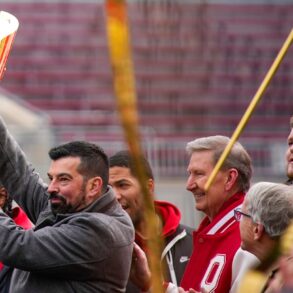
In college football, games and legacies can be decided by a matter of inches.
Throughout much of college football history, even a single loss could derail a team’s hopes for a national championship. A tipped pass, a bad call, or an unlucky ball bounce can flip a game’s outcome in one-score games.
Inspired by the Nebraska Cornhuskers’ historic trend of losing so many close games over the last decade, I decided to dive into college football history to see how different the sport might look if the outcome of every one-score game was flipped season by season.
Welcome to What If: The 1977 College Football Season.
Other What If seasons: 1973, 1974, 1975, 1976
An era of college football would end this year. Following the season, Division 1 would split into 1-A and 1-AA. Because of this upcoming change, the major bowls solidified their conference tie-ins for which they would be known. The Rose Bowl remained a matchup between the Big 10 and Pac-8. The Southwest Conference champion would play in the Cotton Bowl, while the Big Eight winner would travel to the Orange Bowl. Finally, the SEC champ would visit the Sugar Bowl.
The season got off to a fast start, with No. 1 Oklahoma struggling to beat Vanderbilt in the first week and plummeting to fifth in the next poll. The next week would see No. 3 Notre Dame lose to Mississippi, and future Nebraska governor Jim Pillen would ice Bear Bryant’s No. 4 Crimson Tide in Lincoln. Oklahoma would reclaim its No. 1 ranking by defeating Ohio State in week 3. Alabama and Texas would cement their status as title contenders with wins over USC and Oklahoma, respectively, in the same week.
The Comeback Kid and the Green Jersey Game
Notre Dame had an up-and-down 1977 season. Joe Montana was in his fourth season in South Bend going into the 1977 season. Despite his talent and great play during the 1975 season (he missed 1976 due to injury), he entered the season number three on the depth chart. Dan Devine’s Fighting Irish were 1-1 and trailing Purdue by 10 in the fourth before injuries finally helped a reluctant Devine make the switch at quarterback and put Montana in. The Comeback Kid did what he was best known for when the Irish won the game.
The Irish entered one of the season’s biggest games with a three-year losing streak to USC. Notre Dame did their pre-game warm-ups in their blue jerseys. Devine had a surprise for the team to motivate them for their big matchup. Green jerseys hung in each player’s locker as they returned to their final meetings. Notre Dame won the matchup 49-14, a pivotal turning point for the season and Devine’s career as a head coach. Irish fans were unhappy with Devine as a coach following Ara Parseghian. Losing to Purdue and again to USC could’ve had serious consequences. The Notre Dame faithful might have called for a change at head coach by the end of the season.
Unbeaten Teams: Texas (11-0)
The 1977 Heisman Trophy was awarded to Texas Longhorns’ standout running back, Earl Campbell. Known for his punishing running style and remarkable athleticism, Campbell amassed an impressive 1,744 rushing yards and 18 touchdowns during the season. His exceptional performances, including several memorable games where he carried the Longhorns to victory, earned him the coveted Heisman Trophy. Campbell’s dominance on the field not only solidified his status as one of the premier running backs in college football history but also propelled Texas to a standout season and a berth in the Cotton Bowl.
|
Bowl |
Winner |
Loser |
|---|---|---|
|
Cotton Bowl |
Notre Dame (10-1) 38 |
Texas (11-0) 10 |
|
Sugar Bowl |
Alabama (10-1) 35 |
Ohio State (9-2) 6 |
|
Rose Bowl |
Washington (7-4) 27 |
Michigan (10-1) 20 |
|
Orange Bowl |
Arkansas (10-1) 31 |
Oklahoma (10-1) 6 |
Texas ran the regular-season table, finishing as the lone unbeaten. However, the following seven teams – Oklahoma, Michigan, Alabama, Notre Dame, Arkansas, Kentucky, and Penn State – all finished 10-1, ready to claim a title should Texas falter in its bowl.
With each of the top four teams locked into a different bowl game, any outcome other than a Texas Cotton Bowl victory would result in the voters determining the outcome of the championship. Notre Dame was selected to face Texas in the Cotton Bowl, while Washington would face Michigan in the Rose Bowl. Alabama would face Big 10 runner-up Ohio State in the Sugar Bowl, and Arkansas would meet the Big Eight champion Oklahoma Sooners.
With No. 1 Texas and No. 2 Oklahoma losing, Alabama had a great shot of jumping from No. 3 to claim the title. The voters, though, had other plans. Convinced by the Fighting Irish’s dominate win in the Cotton Bowl over the previous top-ranked team, both the AP and Coaches poll propelled Dan Devine’s Notre Dame to claim the title. Not all were convinced that Notre Dame deserved it, though. Future Notre Dame coach Lou Holtz thought his Razorbacks were just as good as the Irish. Barry Switzer believed that Alabama should be crowned as champions.
Mizzou has the most significant jump this season, improving from 4-7 to 9-2 and claiming a share of a Big Eight crown. Fellow Big Eight brother Kansas State ties four other programs with the second most improved wins, adding eight from this exercise. North Carolina and Ohio State each improve by two wins to have undefeated records. The MAC suffers the most, with Central Michigan and Miami (OH) adding five losses.
Texas legend Earl Campbell nearly doubled the Heisman vote of second-place finisher Terry Miller of Oklahoma State. While Texas falls to 9-2 and Oklahoma State improves to 5-6, Earl Campbell still led the country in rushing touchdowns and yards. I expect a slightly smaller winner margin, but he still brings the trophy home to Austin.
The unbeaten Tar Heels can win a title in the Sugar Bowl. In reality, Bill Dooley led North Carolina to an 8-2-1 regular season, enough to convince Virginia Tech to make him the successor to Jimmy Sharpe. With the Virginia Tech Gobblers going 7-3-1 in our alternate world, they likely keep Sharpe for at least one more season. The Tar Heels would likely try to keep Dooley, but more prominent schools may become interested.
Unbeaten Teams: Ohio State (11-0), North Carolina (10-0-1)
For the second season in a row, the exercise elevates the Missouri Tigers into the co-champions of the Big Eight along with Nebraska and Oklahoma. This would’ve been enough to save the Mizzou head coach and D-Day veteran, Al Onofrio, his job for at least another season. With a 9-2 overall record (vs. 8-3 for Oklahoma and Nebraska), Mizzou gets the Orange Bowl bid.
Ohio State flips the result of The Game to head to the Rose Bowl to face Washington for a chance at a title as well. As the SEC champion, Alabama claims an automatic berth to the Sugar Bowl with an opportunity to spoil UNC’s perfect record.
The Cotton Bowl matchup remains the same, but the stakes are significantly less. Both programs are now 9-2 in our hypothetical. This would put them out of title contention even if both unbeaten teams lose, as the two-loss victors of those games would have a much stronger case for a title.
|
Bowl |
Winner |
Loser |
|---|---|---|
|
Cotton Bowl |
Notre Dame (9-2) |
Texas (9-2) |
|
Sugar Bowl |
Alabama (9-2) |
North Carolina (10-0-1) |
|
Rose Bowl |
Ohio State (11-0) |
Washington (9-2) |
|
Orange Bowl |
Arkansas (9-2) |
Missouri (9-2) |
I expect the Orange and Cotton Bowls to go a similar way to reality, with Arkansas and Notre Dame cruising to easy wins. With Ohio State off to the Rose Bowl, Alabama now gets North Carolina in the Sugar Bowl. The Tar Heels had a strong defense that finished second for the season. The offense was a different story, with North Carolina finishing 68th in the nation in scoring. A balanced Crimson Tide team wins the game, setting back UNC’s chances of getting a title.
Warren Moon’s Huskies were a decent but not great team. The Buckeyes had the nation’s best defense in 1977. The Ohio State defense allowed just two passing touchdowns while intercepting 22 passes. Ultimately, I think the Buckeyes give Woody Hayes his sixth title, putting him two ahead of fellow legend Bear Bryant.
A fine line for Dan Devine
The Buckeyes winning the title isn’t as much of a change as Notre Dame losing it in the hypothetical. The Green Jersey Game might’ve stifled the “Dump Devine” movement for a few weeks, but without a title at the end of the season, I don’t think the fans would’ve been happy without another year of him leading the team. I suspect Bill Dooley would’ve tried to leverage his even better season to take one of the most prestigious jobs in college football after getting North Carolina to the doorstep of a title.
The 1977 What If is an excellent illustration of how fine the line between greatness and failure is. Devine’s Notre Dame teams were good, but fans expected more after the success of Ara Parseghian. His reluctant decision to finally put the game in Joe Montana’s hands earned him a national championship and helped to propel him into the College Football Hall of Fame.
Stay up to date on all things Huskers by bookmarking Nebraska Cornhuskers On SI, subscribing to HuskerMax on YouTube, and visiting HuskerMax.com daily.
This post was originally published on this site be sure to check out more of their content.







